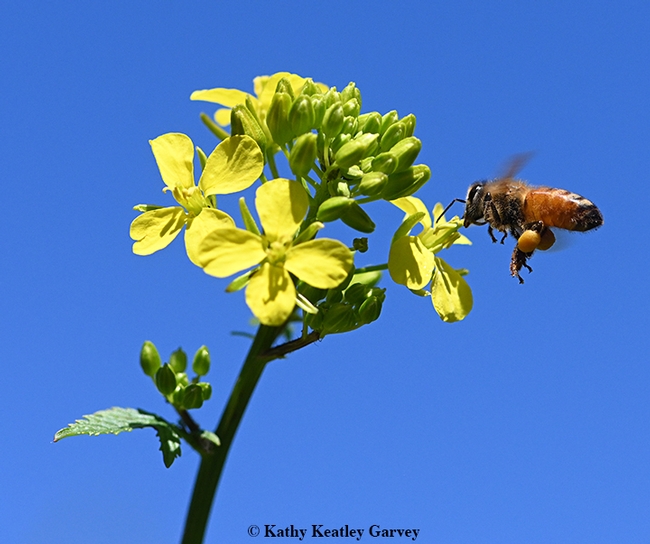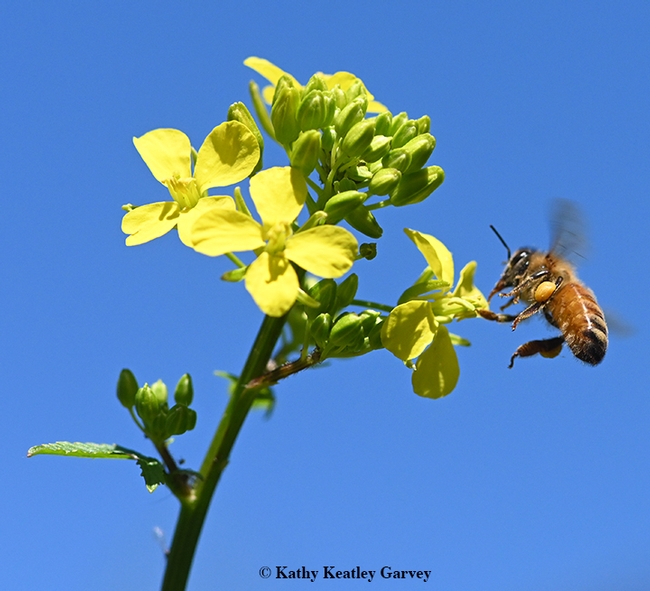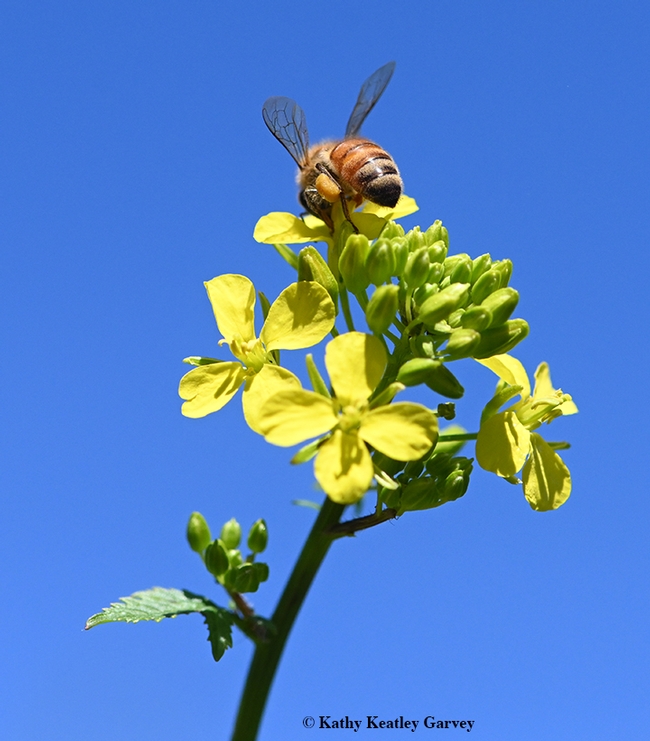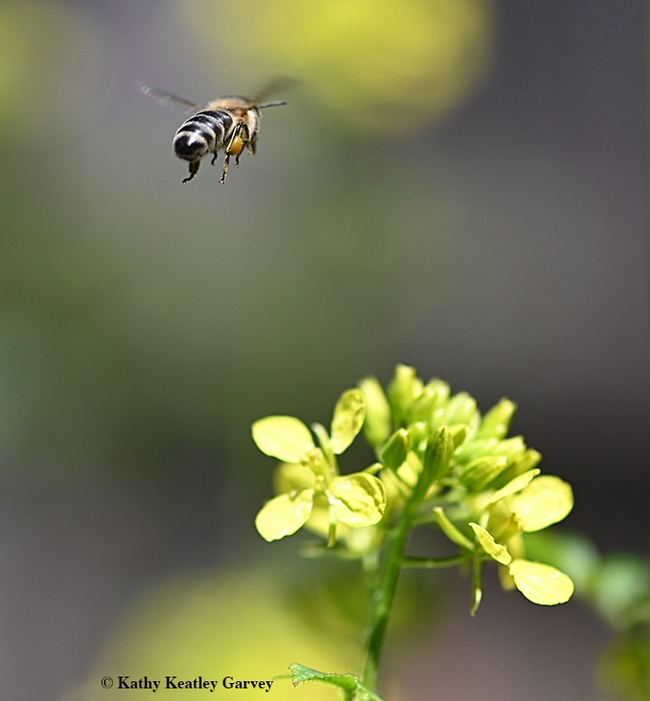The things we overlook are the things we should look for.
Take mustard and honey bees.
You've seen mustard thriving in fields, but have you ever considered planting some seeds from a nursery in your garden so honey bees will have something to eat in early spring? (And then, of course, replacing the mustard with other plants so the mustard does not go to seed? The soil also benefits.)
We've been planting mustard now for several years, and it's a joy to watch the bees foraging, flying and gathering pollen and nectar. Sometimes they'll stop in mid-air to clean their tongues.
"The importance of pollen to the health and vigor of the honey bee colony cannot be overstated," writes Norman Gary, emeritus professor of entomology at the University of California, Davis, in his book, Honey Bee Hobbyist: The Care and Keeping of Bees. "Honey bees need a balanced diet. Honey satisfies the bees' carbohydrates requirements, while all of the other nutrients--minerals, proteins, vitamins and fatty substances--are derived from pollen. Nurse bees consume large amounts of pollen, converting it into nutritious secretions that are fed to developing larvae. During an entire year, a typical bee colony gathers and consumes around 72 pounds of pollen."
"Pollen in the plant world is the equivalent of sperm in the animal world," Gary continues. "Fertilization and growth of seeds depend upon the transfer of pollen from the male flower parts (anthers) to the receptive female parts (stigma)."
Yes, airborne pollen causes most human allergies, Gary acknowledges.
But for us, watching the bees go airborne with a load of pollen is a treat, a treasure and a tribute to their industrious bee-ings.
Attached Images:

Packing a heavy load of pollen, a honey bee heads for a mustard blossom. (Photo by Kathy Keatley Garvey)

Touchdown! A honey bee reaches a mustard blossom. (Photo by Kathy Keatley Garvey)

A honey bee on top of her world--a mustard blossom. (Photo by Kathy Keatley Garvey)

Heading home--a honey bee leaves a mustard patch to share her bounty with her colony. (Photo by Kathy Keatley Garvey)